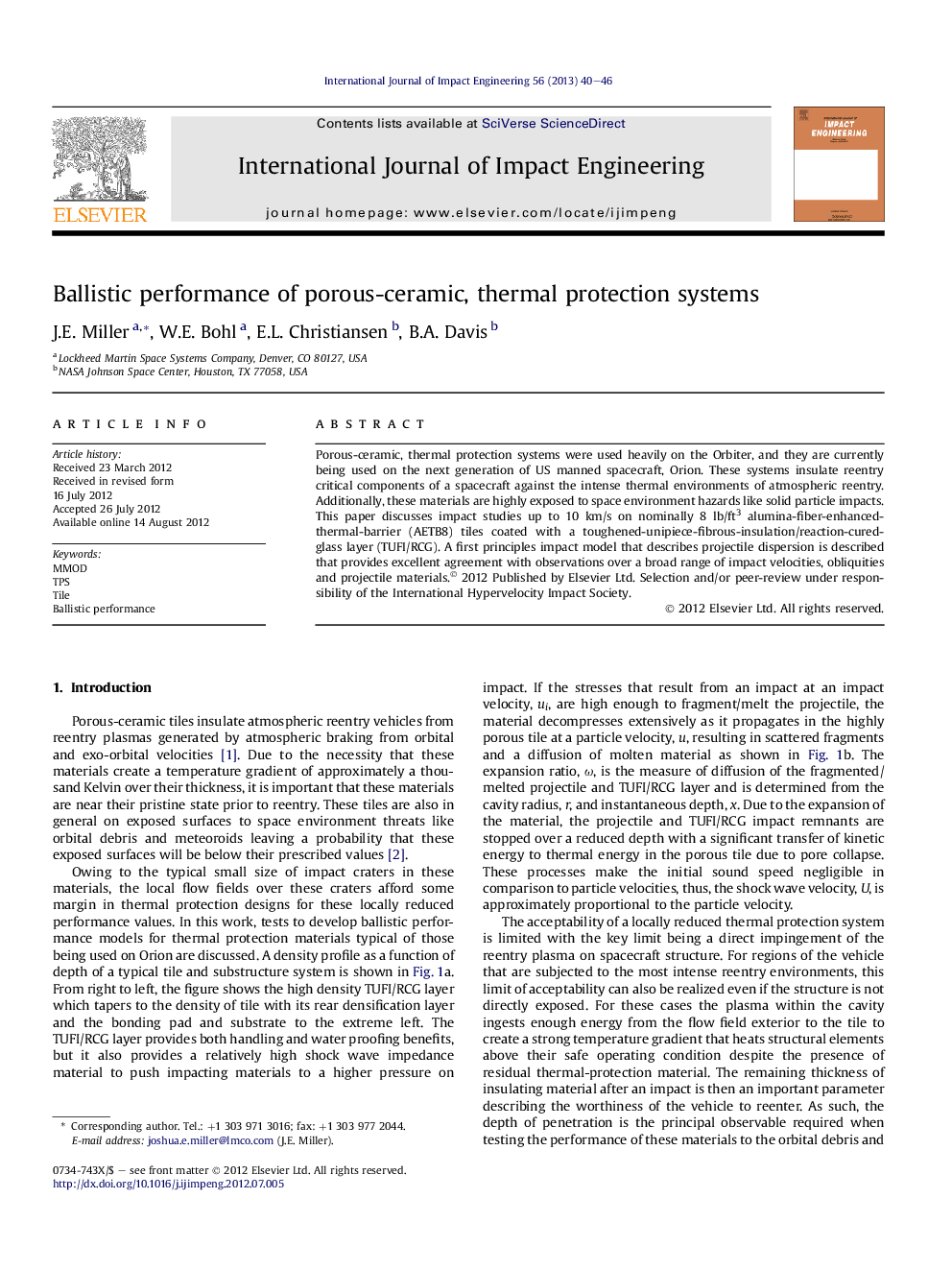| Article ID | Journal | Published Year | Pages | File Type |
|---|---|---|---|---|
| 783032 | International Journal of Impact Engineering | 2013 | 7 Pages |
Porous-ceramic, thermal protection systems were used heavily on the Orbiter, and they are currently being used on the next generation of US manned spacecraft, Orion. These systems insulate reentry critical components of a spacecraft against the intense thermal environments of atmospheric reentry. Additionally, these materials are highly exposed to space environment hazards like solid particle impacts. This paper discusses impact studies up to 10 km/s on nominally 8 lb/ft3 alumina-fiber-enhanced-thermal-barrier (AETB8) tiles coated with a toughened-unipiece-fibrous-insulation/reaction-cured-glass layer (TUFI/RCG). A first principles impact model that describes projectile dispersion is described that provides excellent agreement with observations over a broad range of impact velocities, obliquities and projectile materials.© 2012 Published by Elsevier Ltd. Selection and/or peer-review under responsibility of the International Hypervelocity Impact Society.
► This paper discusses hypervelocity impact tests performed on spacecraft relevant thermal reentry hardware. ► This paper provides a first principles model for understanding and extrapolating the results of the tests. ► The model is compared to the findings of the tests and shows good agreement.
